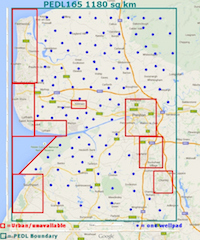How big would your mess of pottage have to be?
 Cuadrilla proudly announced today that local residents, when surveyed, had indicated that they wanted the “community benefit” promised by Cuadrilla to go to their own pockets and not to other local causes. Maybe it’s hard to blame them – if you lose 7% (government estimate from the 2014 Shale Gas Rural Economy Impacts report ) of the value of a property worth £150,000, and most of those within 1km are worth rather more than that, that’s £10,500 so you can probably be forgiven for thinking that any paltry amounts coming from Cuadrilla should go to you and not the local Scouts’ hut. If you live in a Park Home at Carr Bridge worth say £60,000 you would lose £4,200 at that 7% rate.
Cuadrilla proudly announced today that local residents, when surveyed, had indicated that they wanted the “community benefit” promised by Cuadrilla to go to their own pockets and not to other local causes. Maybe it’s hard to blame them – if you lose 7% (government estimate from the 2014 Shale Gas Rural Economy Impacts report ) of the value of a property worth £150,000, and most of those within 1km are worth rather more than that, that’s £10,500 so you can probably be forgiven for thinking that any paltry amounts coming from Cuadrilla should go to you and not the local Scouts’ hut. If you live in a Park Home at Carr Bridge worth say £60,000 you would lose £4,200 at that 7% rate.
So how much are they giving out? Well, this payment is for the second well, so there is already £100,000 to be give to local community projects by the Community Foundation for Lancashire – a body which is in fact based in Merseyside and at least until recently had Cuadrilla’s good friend Babs Murphy as it’s board member for “Philanthropy Development”. This time they are going to pay the cash directly to the households so:
29 households within 1km of the site will each get £2070
259 households between 1km and 1.5km of the site will each get £150
No doubt we will now see Cuadrilla bragging about what a wonderful windfall this is and using it to try to persuade others that fracking brings meaningful rewards for communities, but it is worth pausing for a second to consider the population density involved here. Assuming these households follow the national average there will be 2.14 people on average in each one.
The area covered by the 1km limit is 3.14 km2 and the area covered by the outer 1-1.5 km ring is 3.9 km2
This leads us to conclude that the population density within 1km of the site is about 20/km2 and in the 1km-1.5km area about 141/km2 (the difference is probably largely due to it including the Carr Bridge site).
These are both considerably lower than the average population density of Lancashire which is 483/km2.
If the “benefit” were divided in areas with average population densities then we would have seen 709 households in the 1km area and 886 in the 1-1.5km area.
If Cuadrilla were to divide the “benefit” to an area with average population density in the proportions they plan to here, with 60% going to the area closer than 1 km and 40% to the area between 1 and 1.5 km then:
709 households within 1km of the site would each get just £85 – if they were thinking of splashing out that would buy nearly 200 B&H, 4 bottles of Bombay Sapphire or a couple of Ryanair flights with no baggage to somewhere miles from any fracking.
886 households between 1km and 1.5km of the site would each get a princely £45 – enough for standard anytime return tickets for two people to Manchester from Kirkham.
Meanwhile if these households lived in houses with the average value for Lancashire (£161,166 according to Rightmove) and if each were to lose the DECC report’s 7% they would each lose over £11,000 on their houses, with a total loss of property value within a 1.5km radius of almost £18 million.
Don’t be fooled by the shiny £ signs. Using the government’s own figures they’d have to provide the “benefit” from 180 wells off this one pad before they made up for just the loss in house value forecast by the Rural Impacts report.
So if you are tempted to sell your birthright for a mess of pottage make sure it’s big enough to fill the hole that will be left by this industry. Of course local residents are not selling their birthright voluntarily are they? Their council said “no”. It is the government forcing this industry onto our area and then expecting us to be grateful when the real beneficiaries sweep a few crumbs off the table for “lucky” local residents/receptors to scrat about for on the floor.




























